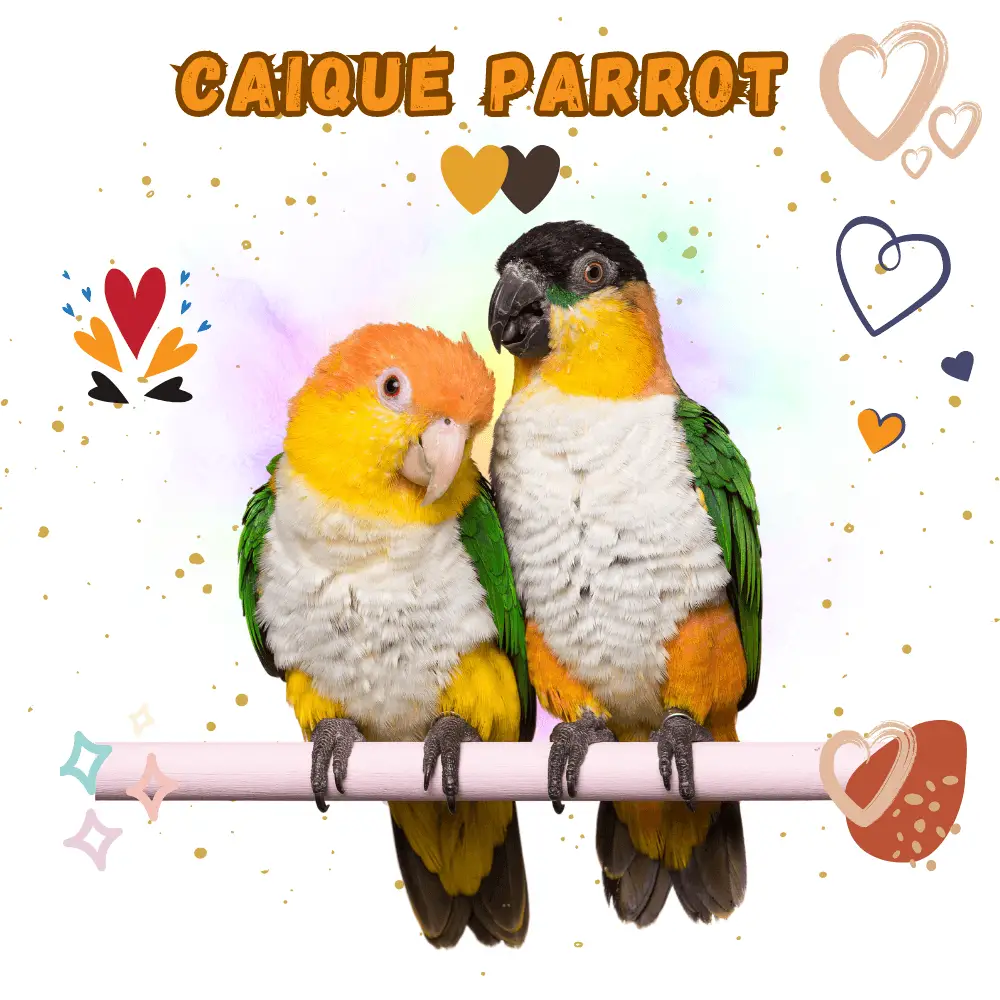
Caique: If you want a beautiful, intelligent, active, and very interesting (and sometimes mischievous) bird, the caique parrot may be the right bird for you and your family. The caique parrot is a good pet, and it is known as the clown of the bird world.
The Caique parrot is one of the most colorful parrots in the parrot family, although it cannot speak well, it loves to learn tricks and shows, and in our article, we will discuss a lot of information and facts about this wonderful parrot, and learn about its types, personality and behavior, and how to care and train the parrot in home, follow us.
The caique parrot is like a clown, as the caique parrot loves continuous play, climbing, and chewing, and the parrot also loves to hang from the cage bar, ropes, and ladders and play with everything available, and it also loves to roll on its back and play with toys with its feet, and the well-trained caique parrot is very loving and affectionate He loves to interact with other birds, toys and people and can be very noisy. However, he is one of the most suitable birds in all environments and his loud voice is unobtrusive.
Habitat of the Caique Parrot
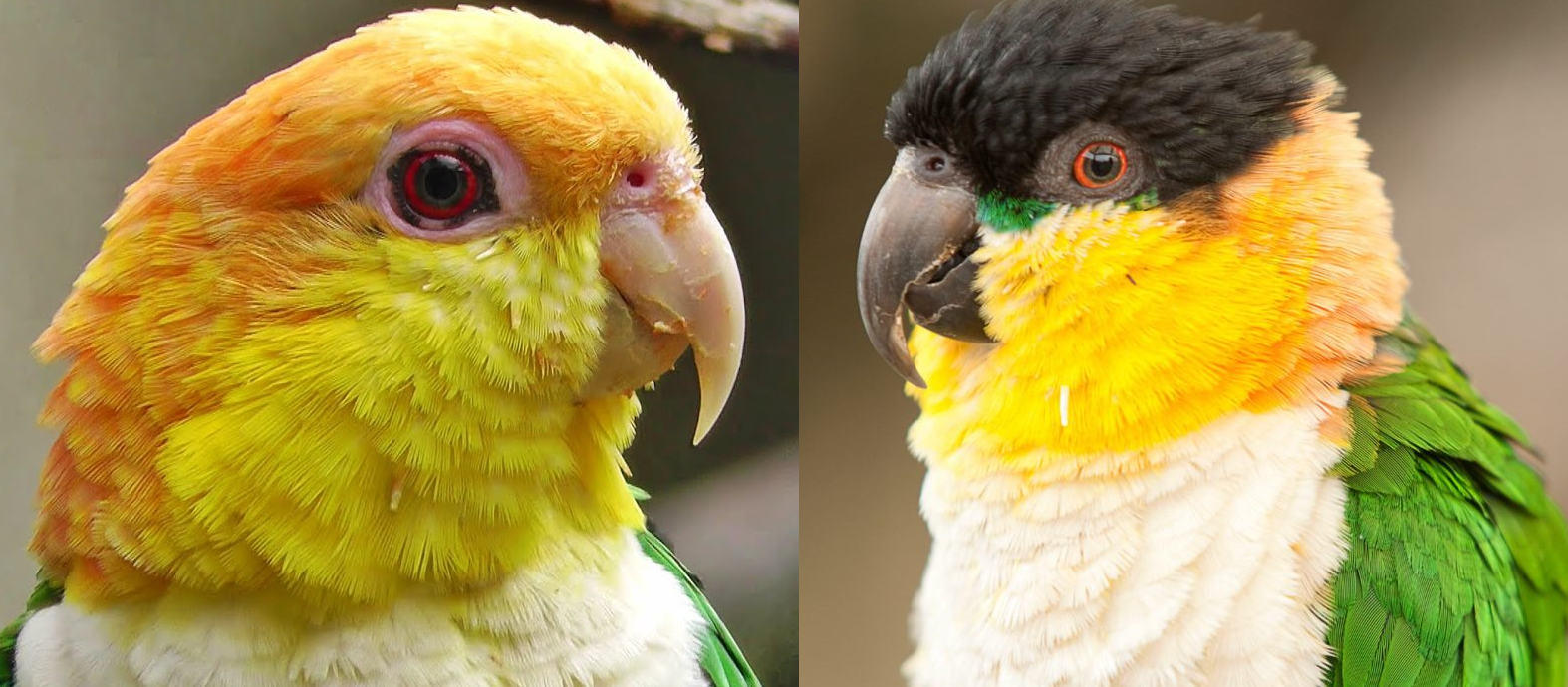
The Caique parrot spreads in the general region in northeastern South America, and the white-bellied caique parrot has been found in southern Amazonia from northern Brazil to Bolivia, Peru, and Ecuador, and the black-headed caique has been found in the north of the Amazon region, From the Guanas westward to Colombia, Venezuela, Ecuador and Peru.
Description of the Caique
The Caique is a small, stout-bodied bird with yellow, orange, green, and white plumage, the Black-headed Caique has black caps that go down just before its eyes and to the top of its beak, the White-bellied Caique has a pale orange cap instead, and the Black-headed Caique has The beak is black below and pink above, while the duck-billed caique has an all-over pink beak, and the caique has a naturally large beak.
And if you give the appropriate toys, the parrot maintains its beak properly, and although the beak can be intimidating, keep in mind that your bird will often use its beak as a third foot and may use it to climb your hand, and only a qualified veterinarian should trim the beak of a caique, and it contains The beak contains nerves and blood vessels, which can be severely damaged by an unqualified person. The caique is a very colorful bird. It is small and has a short square tail.
All types of caique parrots reach 23 cm in length, but some subspecies look a bit larger like the yellow-legged caique parrot. Surprisingly, these parrots live long despite their small size, often reaching 40 years or more.
White-bellied caique parrot
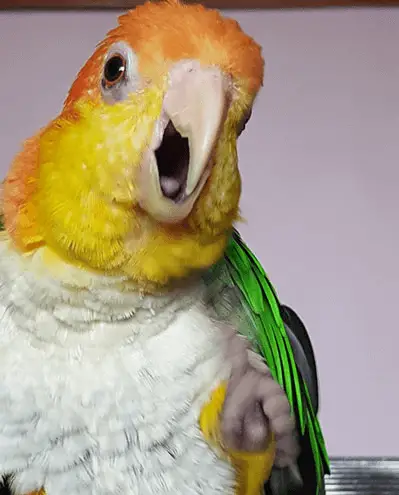
Most of white-bellied caique parrot is orange in color, the side of the head and throat are yellow, the back and wings are green, the chest and abdomen are creamy white, the beak is like a horn and colored, and the eye color tends to reddish brown, and there are two types of white-bellied parrot:
- The Caique Locogaster parrot has green legs and wings.
- The Caique Xanthumaria parrot has yellow legs, green wings, and a yellow tail.
Black-headed caique parrot

Most of the caique parrot’s head is black in color, and the cheeks, throat, chest, and leg are yellow-orange in color, and it also has an orange stripe across the neck from the back bordered by some feathers tilted to blue, and the back, wings, and tail are green in color, and the chest and abdomen are creamy white, The tip of the tail is yellow, the beak is black tending to gray, and the eyes are red tending to orange.
Caique Parrot Personality and Behavior
Apart from the caique’s striking appearance, its personality is the main reason for its rise in popularity. Caique owners adore this energetic little comedian.
Most bird owners know they have to accept the ugly part of bird ownership when they take on a graceful, energetic companion.
Caiques are great pets, but they are not perfect, they can be very stubborn, but they are very sweet, and you should keep an eye on parrots if you have other birds at home.
Toys are an essential component of a caique’s energy. Parrots are always active and love to play with toys, especially toys that can be knocked down.
Make sure you have a steady supply of new toys on hand to replace old ones when they get rough or get broken. You should try several types.
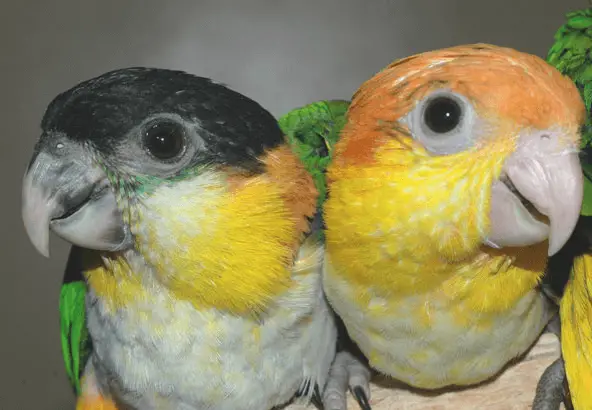
Social behaviors of the caique parrot
The caique parrot is one of the friendly birds that love to mix with people, and in the wild, the white-bellied caique parrot lives in pairs, in a family group, or in a small flock, and the black-headed caique can live in family groups or Large groups of up to 30 birds, and in captivity, the caique parrot is very social and interacts to a great extent with other birds and with people, however, the black-headed caique parrot can be somewhat sharp-tempered, and it can be aggressive with some other birds, nor It should be left unattended with other pet birds.
Caique parrot food

Fresh food and water should be provided daily. In the wild, the caique parrot lives high in the treetops, eating fruits, berries, and seeds.
In captivity, its diet includes a good seed mixture or pellets along with many fruits and vegetables. Fresh foods include peas.
Greens, dandelion greens, sweet corn, beet greens, carrots, broccoli, lettuce, chickweed, watercress, spinach leaves, and sweet potatoes.
Fruits that can be offered to the caique include apples, peaches, apricots, bananas, pears, peaches, and most other fruits. Do not feed the caique avocado as it can be toxic to the bird.
Special treats for the caique are nuts sometimes. Cuttlefish bone and calcium block are good sources of calcium. Vitamins can be added to food.
Bathing the Caique Parrot
The Caique parrot loves to take a shower from time to time, and this is achieved by using a sprayer, or through a hose that has a fine spray and the water is lukewarm, and a ceramic basin with water can be placed in the bottom of the cage.
Caique parrot cage

must have an area commensurate with the freedom of movement of the parrot, as well as the perch, food and water dishes, and a variety of toys, and the appropriate size of the cage is not less than (60 x 60 x 60) cm as a minimum, and the larger the size, the better.
Better for parrots, the cage is made of metal as a material that is resistant to chewing, the wooden cage is easy to destroy, and the horizontal bars must be available because the parrot likes to climb.
Provide two perches, which are sticks, the size of which is between (20-25) cm, and we put one of the perches on the top so that the bird can stand on it, and the other is placed at the bottom near water and food, and the natural perches of willows, poplars, and fruit trees are good for the feet of birds And for its beak, and the cage must be placed in a place far from harmful fumes, and in order for the bird to feel safe, the cage can be covered at night.
Parrot toys
When the caique parrot is in a small cage, it needs to get out of the cage on a daily basis to exercise and play, and a playroom is a good option, with the provision of some games such as climbing rope, swing, chains, bells, wooden toys or other the games.
Caique parrot care
Good care for the health of the parrots begins with providing a clean environment, and basic care for the cage includes daily cleaning of the food and water dishes, and the perch and toys must be washed weekly, and the lower part of the cage must be washed once every two weeks, and the cage must be sterilized once a year, and the cage can be sterilized once a year. Replace some old things like dishes, toys, and perches.
Caique parrot training
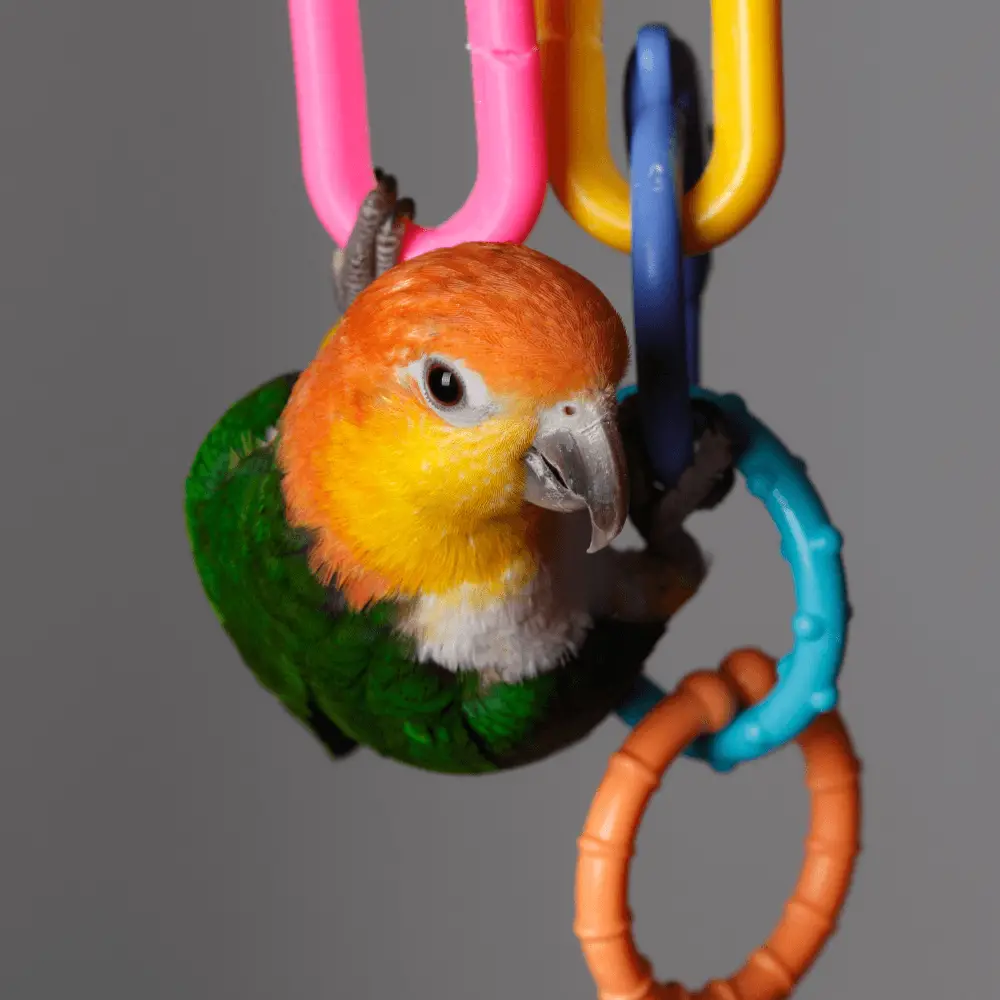
The caique parrot is one of the very smart birds and it enjoys learning tricks and shows, and it has a very strong will and when training it needs a strong hand to deal with it, and if it is dealt with in fear it can become very aggressive, and when this parrot is trained properly it will be A wonderful companion and friend.
The basics of taming
In order to be able to deal with your caique parrot and to train it, you must first rely on trust. You must give the new parrot a few days so that it gets used to you, your voice, and the cage before you deal with it, the caique parrot is more receptive to training in the Evening and each session of training is about 20 minutes, and there is a rest of about an hour between training.
Initial training
the aim of which is to get a parrot to accept treatment from you, which will allow you to touch his head, and once the parrot trusts you, you can work on getting him to climb on your hands, and at this stage, you can get after several weeks.
Advanced training
When you get a caique that has passed the stage of shyness, you can then work on behavior and teach tricks. Repetition and hesitation are the keys to education.
Caiques can learn several words or sounds and environmental sounds better than human sounds, and remember that training birds require Patience, Never punish a parrot, as this will destroy the parrot’s trust that you have spent so much time building.
Caique parrot reproduction
A female caique parrot lays (2-4) eggs, and the incubation of eggs reaches 27 days, and the males feed the female during her rest period, and the young parrot will leave her nest after about 10 weeks.
Health problems facing the caique parrot
A healthy caique parrot should be cheerful, active, and alert with bright and clear eyes, and you should watch your bird eat and drink throughout the day, although it may prefer to eat when you eat your food because it is an animal that lives in flocks, and it must appear Your bird is well-groomed with elegant and bright feathers, and the feathers on the body mostly during rest should not fluff constantly, and the feet and legs should be smooth and free from lumps and rough crusts, and the birds pronounce regularly with a tweeting voice, clicks, whistles, and acquired words, and enjoy communication and imitation, and it must be a parrot The caique is interested in communication, but it may be shy or terrified around new people or in new environments.
A healthy bird is confident and curious despite caution and awareness as well. There are some signs that indicate that there are some health problems in the caique, which are:
- Fluffing the feathers
- Sneeze
- The bird is at rest with its head thrown back
- Secretions from the nose
- Cloudy eyes
- Loss of appetite
- Any change in stool
There are some common diseases such as:
- Internal parasites
- Intestinal influenza
- Coccidia
- Respiratory diseases
- Remove the feathers
- Parrot fever, also known as psittacosis
SOURCE: African Grey Parrot Pet





















